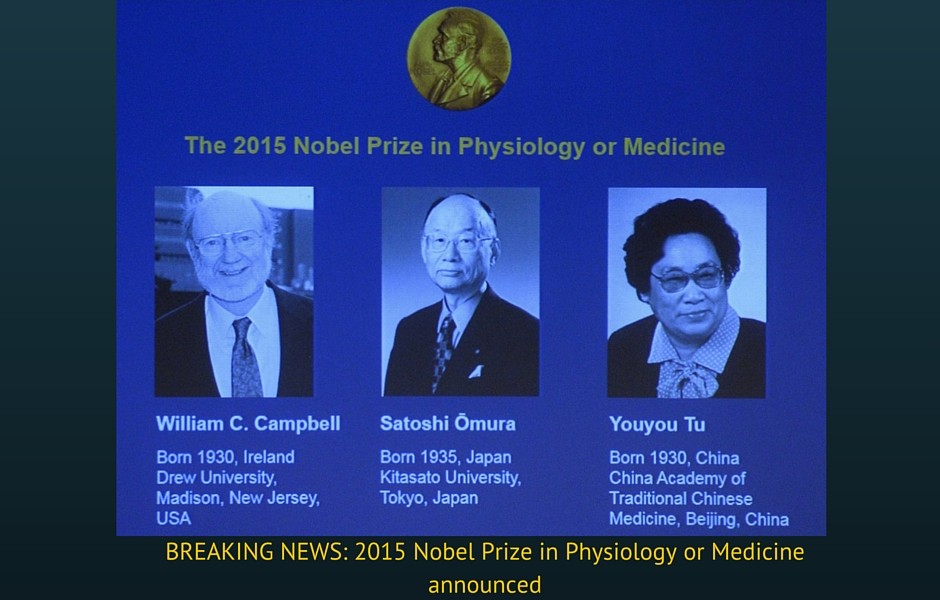
The Nobel Prize in Physiology or Medicine 2015 has been awarded “one half jointly to William C. Campbell and Satoshi Ōmura for their discoveries concerning a novel therapy against infections caused by round worm parasites and the other half to Youyou Tu for her discoveries concerning a novel therapy against Malaria.” Collectively, the prize recognizes drug discoveries from nature that transformed two of the world’s most devastating parasitic diseases.
The somewhat surprising announcement was made this morning in Stockholm by Urban Lendahl, Secretary for the Nobel Committee for Physiology or Medicine.
Campbell and Omura were recognized for the discoveries leading to Ivermectin, a semi-synthetic derivative of a drug from soil bacteria to kill roundworms that cause river blindness and, to a lesser extent, elephantiasis. The Irish-born Campbell, now a professor emeritus at Drew University, did his work at Merck.
Tu isolated the anti-malarial drug artemisinin from a plant used in traditional Chinese medicine.
The techniques used, and still employed today, involve chemical strategies and biological assays to isolate natural compounds with in vitro antiparasitic activity, then purify them and solve their novel chemical structures. The initial step is called bioactivity-directed fractionation. In fact, the 1952 medicine Nobel to Rutgers’ scientist Selman Waksman for streptomycin, the first drug to treat tuberculosis, acknowledged the use of similar techniques with microbes from the same genus, Streptomyces. His graduate student, Albert Schatz, isolated the bacterium producing the drug from soil outside the laboratory.
Nature’s Pharmacopeia
Omura had been searching soil samples for microbes that made chemicals that could kill roundworms, the cause of river blindness and elephantiasis. According to the Nobel lecture, a sample was collected next to a golf course “that would change the history of medicine.” He sent 50 of his most active extracts to William Campbell who found that one completely eradicated roundworms in culture. The drug, avermectin, was modified to create the drug ivermectin, developed at Merck by Campbell’s research team. The conversion of the naturally-occurring avermectin B1 to ivermectin was published in the Journal of Medicinal Chemistry in 1980.
In the midst of today’s questioning the profit motives of prescription drug discoverers and generic drug makers, Merck gave away ivermectin for free beginning in 1987 to countries in need to treat river blindness. Similarly, today’s controversies over industry relations with academic investigators fail to acknowledge that discoveries like Omura’s couldn’t have made it to patients without Campbell’s collaboration to screen the original extracts and Merck’s ultimate development of a semi-synthetic derivative of the original compound.
Yu, the first Chinese Nobel laureate in medicine, drew her discovery from her original training in traditional Chinese medicine. The wormwood plant was the source of the drug that kills the tenacious malaria parasite, Plasmodium falciparum.
Original Post : Forbes.com